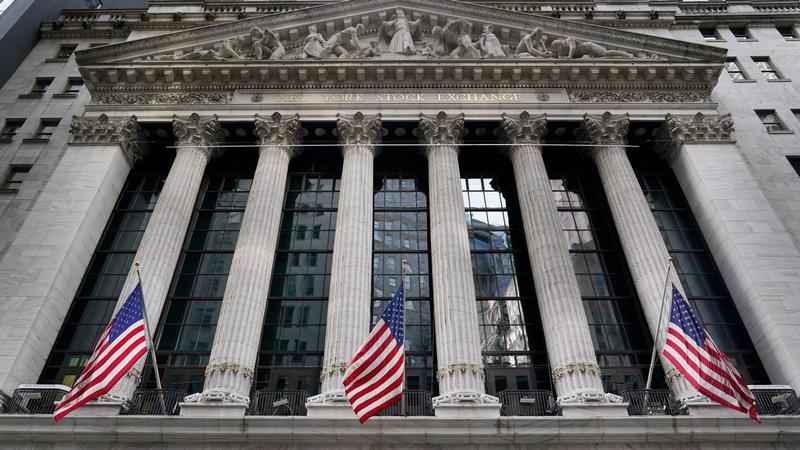Stocks end higher after Fed accelerates stimulus pullback

This Nov. 23, 2020 file photo shows the New York Stock Exchange in New York. Stocks are edging lower in early trading on Wall Street Wednesday, Dec. 15, 2021, as traders wait to hear from the Federal Reserve after its last policy statement of the year. [AP Photo/Seth Wenig, File]
Stocks rose steadily on Wall Street Wednesday after the Federal Reserve said it would accelerate its pullback of economic stimulus and would likely raise interest rates three times next year to tackle rising inflation. The Fed will shrink its monthly bond purchases at twice the pace it previously announced, putting it on pace to end them altogether in March. The S&P 500 shook off an early loss and closed up 1.6%, just below the record high it set last Friday. The index is coming off two days of losses. The Dow Jones Industrial Average rose 1.1% and the Nasdaq gained 2.2%.
THIS IS A BREAKING NEWS UPDATE. AP’s earlier story follows below.
Stocks rose on Wall Street after the Federal Reserve announced it expects to raise interest rates three times next year as it seeks to tackle rising inflation.
The central bank plans to shrink its monthly bond purchases at twice the pace it previously announced, likely ending them altogether in March. The bond purchases were intended to hold down long-term rates to aid the economy but are no longer needed with unemployment falling and inflation at a near-40-year high. The accelerated timetable puts the Fed on a path to start raising rates in the first half of next year.
The major stock indexes rose after having been down before the Fed’s statement. The S&P 500 was up 1.4% as of 3:29 p.m. Eastern. The benchmark index, which set an all-time last Friday, closed lower the first two days of the week.
The Dow Jones Industrial Average was up 343 points, or 1%, to 35,879. The Nasdaq composite climbed 1.7%.
Bond yields rose. The yield on the 10-year Treasury rose to 1.47% from 1.44% late Tuesday.
“This was a well-telegraphed acceleration of the taper,” said Brian Jacobsen, senior investment strategist at Allspring Global Investments. “The Fed has the option, but not obligation to hike three times in 2022. The growth and inflation outlook will likely improve where they can just take it slow."
The Fed’s latest policy update, issued at 2 p.m. Eastern, followed its policymaking committee’s last meeting of the year.
The central bank had been widely expected to announce a faster pullback of its stimulus measures as inflationary pressures build.
Businesses have been dealing with supply chain problems and higher costs for months. It has been a key concern for investors as big companies pass those costs off to consumers, who have so far been absorbing higher prices on everything from groceries to clothing and other consumer products.
On Tuesday, the Labor Department reported that prices at the wholesale level surged 9.6% in November from a year earlier. The department’s producer price index measures inflation before it reaches consumers. That followed a report Friday showing that consumer prices surged 6.8% for the 12 months ending in November, the biggest increase in 39 years.
By speeding the reduction in its bond purchases and signaling three rate hikes next year, the central bank “is signaling that it is taking inflation seriously and, so far, the market believes that the Fed will successfully fight inflation,” said Chris Zaccarelli, chief investment officer for Independent Advisor Alliance.
Concerns over the impact from the Fed’s actions, along with the latest coronavirus variant, have made for choppy trading as the market approaches the close of 2021. Even so, the S&P 500 is on up about 25% this year.
Nearly 70% of the stocks in the S&P 500 rose, with technology and health care companies accounting for much of the gains. Apple, which along with most technology stocks was coming off a two-day skid, rose 2.7%. Eli Lilly jumped 9.3% for the biggest gain in the S&P 500 after giving investors an encouraging update on its financial forecasts and drug development.
Retailers and other companies that rely on consumer spending recovered from an early slide. The sector had been down following the latest retail sales report from the Commerce Department. Sales rose a modest 0.3% in November, but fell short of economists’ forecasts amid concerns that rising costs could crimp consumer spending.